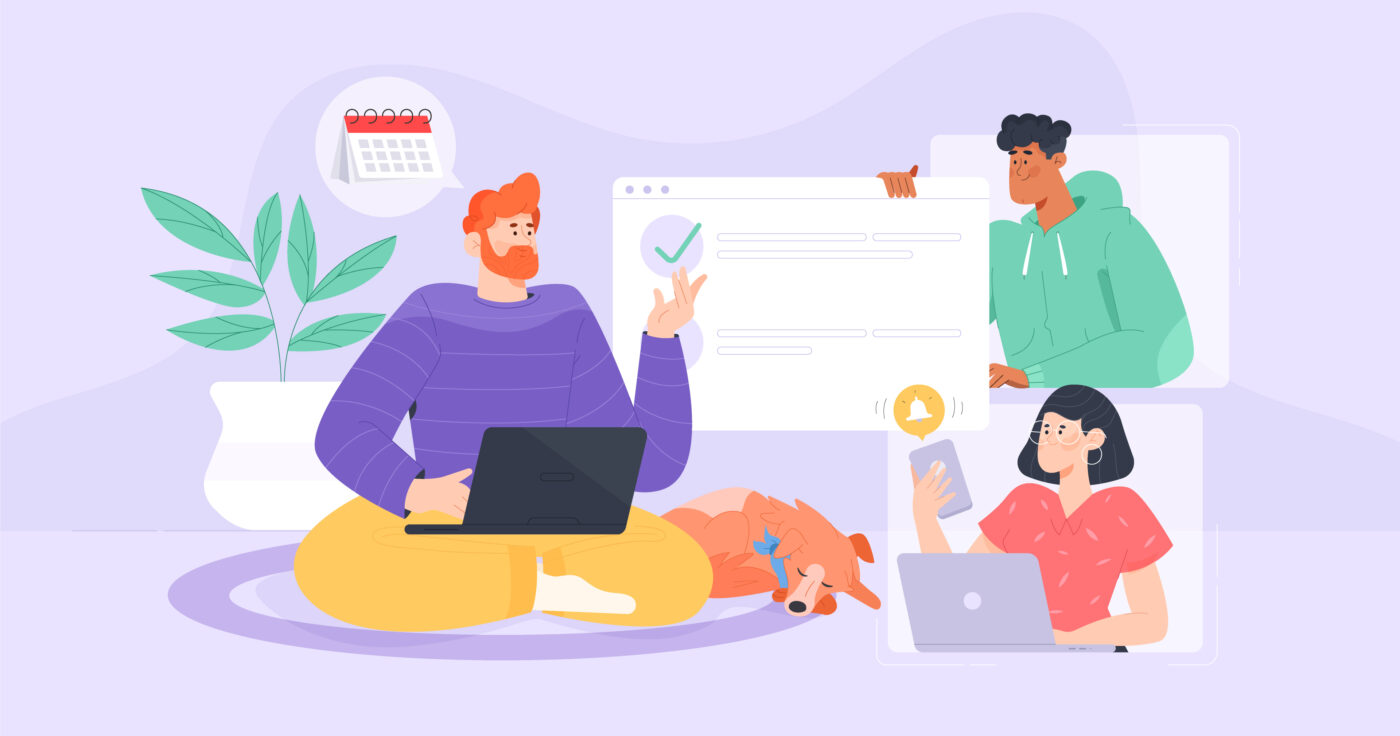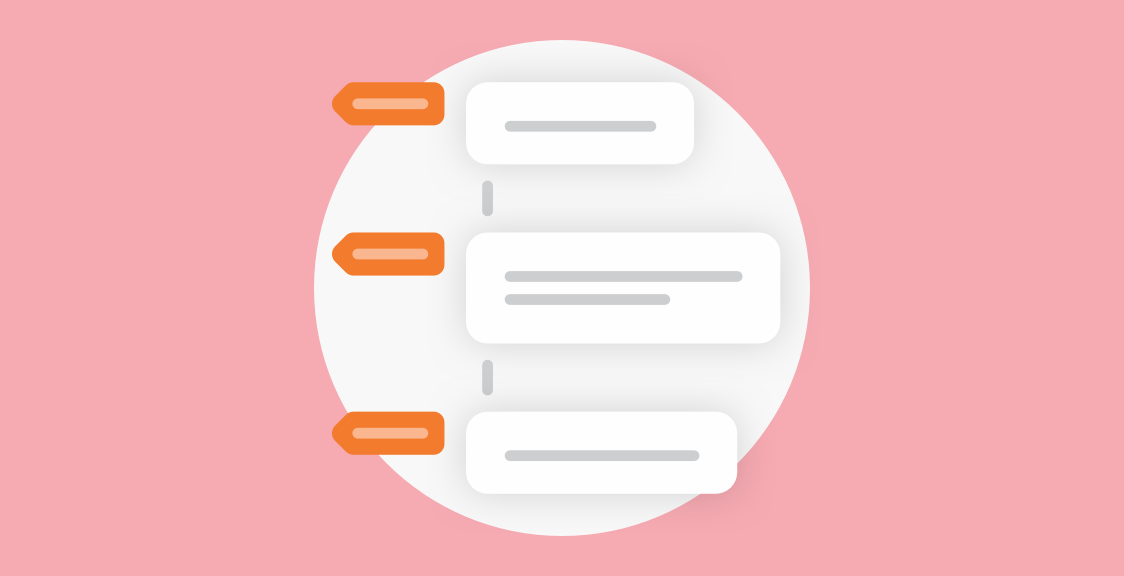Having a meeting is a tried and true strategy for getting everyone on a team together, but there are times when a formal sit-down event might be overkill. Brown bag sessions keep things casual while still accommodating meeting objectives.
In this article, we’ll cover the As to Zs of brown bag sessions, define what a brown bag session is and how they it’s from conventional meetings, as well as unique value they add to your team.
What’s A Brown Bag Session?
Brown bag sessions are also known as informal meetings, informal training, or Lunch & Learns, and they are generally held around or during lunchtime. The midday timing is why these meetings get their name since participants usually bring their lunches that are often carried in brown paper bags.
Brown bag sessions can be run in these different formats, each with a different objective.
Skill Swap Session
In this format, participants with different skills or expertise come together during lunchtime to share their knowledge. Each participant can teach a short workshop or provide insights within their chosen area of expertise. These skills don’t have to be directly related to work as brown bags are meant to be informal.
Group Brainstorm
Let’s say someone has a work problem they’d like some input from, and the participants come from different departments. The unique perspectives from everyone coming together can help with creative block and idea generation.
Here’s how it goes:
- Participants bring their lunches to the brown bag group brainstorm.
- The session begins with a brief introduction of the problem or challenge.
- The group engages in a structured brainstorming session to figure out how to solve it.
Don’t forget to write the ideas down!
Book Club Brown Bag
Social brown bag meetings or brown bag socials are just that: lunchtime meetings where attendees focus on mingling away from the office. Adding a theme or topic of choice to the social helps break the ice and foster discussion – it doesn’t always have to be a book, it can also be a movie, a Ted Talk, or anything else that your team prefers.
What Separates Brown Bag Sessions From Other Meetings
The typical workday is already inundated with meetings, but brown bag sessions are different. Here’s why.
Not Your Typical Boring Meeting
Formal meetings are usually sit-down sessions held onsite or offsite, with a strict agenda and mandatory attendance for participants.
Informal meetings mean that participants are more relaxed and willing to share what’s on their mind, and they are more likely to be engaged and present since they aren’t bored by rigid formal meeting protocol. Loosening up helps facilitate meaningful discussion without the restrictions of a typical meeting.
Informal Approach to Solving Complex Problems
Problems like misunderstandings can sometimes come from formal work settings because of the power distance involved. For example, a subordinate is more likely to avoid speaking over leadership during formal meetings.
Brown bags help to lower the stakes by introducing everyone as equals, encouraging openness without fear of repercussions. This in turn facilitates better problem solving since the complexities of hierarchy and authority are put on hold.
Quickest Way to Build Rapport In New Teams
Formal meetings focused on work-related matters can be stiff – casually engaging with colleagues over food during a brown bag session is much more conducive to building stronger workplace relationships, which boosts collaboration between coworkers.
Brown bag meetings are great for encouraging interaction between coworkers outside of work, opening up opportunities for improving team relationships, morale, and company culture.
Doesn’t Take Away Productive Time
If you’ve ever had your workflow interrupted or disrupted by a meeting, you’re not alone. Brown bag meetings usually happen onsite during midday, so participants can quickly shift back into gear once lunch hour is over.
A brown bag session can even be tailored to cater to specific needs or interests. For example, you can have a social brown bag with themes like hobbies and pets, or make an excursion of it by visiting a nearby restaurant that everyone has wanted to try.
How to Add Brown Bag Meetings To Existing Workflow
Running an informal meeting is much easier since it involves less preparation, but there are still some steps involved in successfully integrating brown bag sessions.
Start Slow
It’s exciting to add a new initiative like brown bag meetings to the workplace day-to-day, but rushing things will burn everyone out, including yourself. Don’t go scheduling a weekly brown bag session right off the bat – instead, try running brown bag sessions as one-offs to gauge interest, or go for a more realistic and relaxed timeline like biannual or quarterly sessions.
Manage Uncertainty
Rustling up enthusiasm for brown bag sessions will be difficult if participants are unclear about what the meetings will involve. Nobody wants yet another meeting on their plate if they can help it.
Before you sign everyone up for a brown bag meeting, be transparent about the intended purpose. For example, the session can be focused around training, socializing, problem-solving, sharing knowledge, or decision-making. The clarity will help attendees feel reassured and emphasize the meeting’s informal nature.
Take In Feedback
Sometimes our best efforts don’t go well – that’s an opportunity to find out what isn’t working and do better next time. If the team members participating in the brown bag sessions have feedback, this is your chance to understand their concerns.
When there is resistance to adding a meeting or low enthusiasm during the session, the participants involved might be facing meeting exhaustion or issues with the current meeting culture at the workplace. New initiatives sometimes help to unearth indicators that can be addressed before trying again.
Choose an Appropriate Theme
This might be a no-brainer, but we’d steer clear of controversial topics like politics or religion for a brown bag session. Since they’re supposed to be informal and relaxing, select a topic that is generally accepted to keep things inclusive, like career growth, hobbies, or personal development.
Brown bag sessions are also great for disseminating information that’s somewhat related to work, such as introducing new company benefits or health initiatives. When in doubt, consider the comfort of the participants before making your decision.
How to Make The Most Out of Your Brown Bag Sessions
Before you run your next brown bag session, here are some tips to help you maximize benefits and manage any issues that might pop up.
Don’t Try To Extend Your Formal Meetings Into Brown Bag Sessions
Keep brown bag sessions separate from formal meetings. As tempting as it is to use brown bags as an extension when problem-solving and work discussion, eating into lunch hour is a surefire way to sour participants to brown bag sessions in general.
Mind The Cadence
Brown bags are a great way to foster relationship building among colleagues, but there can be too much of a good thing. Running brown bag sessions too frequently reduces the number of lunch hours where employees can do what they want with their time, and that reduced autonomy will make brown bag meetings feel like yet another obligation.
Try for once a month, every other month, or quarterly – if the meetings are well-received, you can always bump up the frequency later.
Keep It Informal
We can’t stress this enough: brown bags that are too formal are no different from formal workday meetings. Pick a lighter topic that’s not as intense so that participants don’t feel like work is spilling over into leisure time. If the atmosphere is comfortable and the event is enjoyable, you’re more likely to get repeat attendance at your next brown bag.
Offer Food
Brown bags imply that participants bring their own food, but the promise of a free lunch can sweeten the deal and encourage attendance. Before you book catering, though, check in with everyone to make sure you accommodate any dietary restrictions and allergies.
Encourage Ideas and Feedback
Brown bag sessions are great, and they’re even better when someone helps you run them. Before your next brown bag, send a form out to get feedback and ideas from past or future participants. Not only will this help with planning, but this will also motivate attendance if the session is about something employees are interested in.
Frequently asked questions
How can I organize an effective Brown Bag Session?
To organize a successful Brown Bag Session, choose relevant topics, schedule regular sessions, encourage participation, and provide resources like presentations or handouts. Ensure an inclusive atmosphere where everyone feels comfortable sharing and learning from one another.
Why are Brown Bag Sessions important for teams?
Brown Bag Sessions are crucial for teams because they facilitate knowledge transfer, skill development, and cross-functional collaboration. They create a relaxed and open environment where team members can share expertise, address challenges, and keep up with industry trends.
How long should a typical Brown Bag Session last?
A typical Brown Bag Session usually lasts about 20 to 45 minutes. This duration allows for a focused discussion or presentation while accommodating team members' lunch breaks, making it a convenient and effective way to share knowledge.



